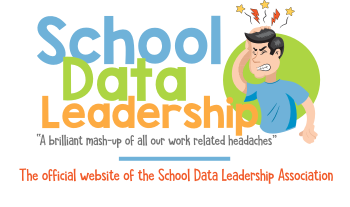
Curiosity: a disposition to wonder, ponder, and ask 'why?'. A thirst for understanding and a desire to explore. A general dissatisfaction with the status-quo.
For educators, the concept of curiosity as a disposition to wonder, ponder, and ask "why?" becomes a pivotal tool in shaping the educational experience. Here’s how this concept can be applied effectively in the educational context:
1. Creating an Inquiry-Based Learning Environment
Curiosity-driven educators can transform their classrooms into spaces where inquiry is at the forefront of learning. This involves encouraging students to ask questions, explore various answers, and delve deeper into subjects. By framing lessons around questions rather than just facts, educators can stimulate students’ natural curiosity and drive for understanding.
Real world examples:
- A science teacher posing an open-ended question like "Why does ice float on water?" and having students design and conduct experiments to investigate the properties of matter.
- A history class examining primary sources from multiple perspectives on a historical event, encouraging students to question the narratives and dig deeper into the complexities.
2. Modeling Curiosity
Educators who themselves embody a thirst for knowledge and a continuous dissatisfaction with the status quo serve as powerful role models for students. By openly sharing their thought processes, the questions they ponder, and how they seek out new knowledge, teachers show students that curiosity is not just a tool for learning but a lifelong approach to engaging with the world.
Real world examples:
- A literature teacher sharing their own questions and thought process while analyzing a poem, demonstrating how to approach a text with an inquisitive mindset.
- A math teacher admitting they don't know the answer to a student's question, but working through the problem alongside the class to model curiosity and problem-solving.
3. Utilizing Diverse and Dynamic Teaching Materials
To foster curiosity, educators can introduce a variety of materials and experiences that challenge conventional perspectives and push beyond the standard curriculum. This might include integrating multimedia resources, guest speakers, or field trips that align with the subject matter, thereby providing students with a broader, more engaging learning experience.
Real world examples:
- An English class reading texts from diverse authors and time periods to expose students to varied voices and perspectives beyond the traditional canon.
- A biology lesson incorporating virtual reality to allow students to explore ecosystems and organisms in an immersive way.
4. Encouraging Risk-Taking and Tolerance for Ambiguity
A curious mindset often involves exploring the unknown and tolerating ambiguity. Educators can support this by creating a classroom culture where it’s safe to make mistakes and where diverse interpretations are valued. This approach helps students learn to navigate the uncertainties of learning and inquiry, building resilience and flexibility.
Real world examples:
- An art teacher encouraging students to experiment with new mediums and techniques, emphasizing the process over the final product.
- A philosophy course examining complex ethical dilemmas without clear-cut answers, pushing students to grapple with ambiguity.
5. Cultivating Interdisciplinary Connections
Curiosity often leads to making connections between seemingly disparate ideas. Educators can design projects and discussions that span multiple disciplines, encouraging students to see how concepts interlink and how knowledge is not confined to silos but is interconnected across fields.
Real world examples:
- A project that combines elements of science, technology, engineering, and math (STEM) by having students design and build models to solve a real-world problem.
- A unit on the Renaissance that explores the era's advancements in art, science, and philosophy, showing how different disciplines intersected.
6. Prompting Reflection and Metacognition
To deepen their students' curiosity, educators can incorporate reflective practices into the classroom. By asking students to think about what they’ve learned, question their own understanding, and consider what questions remain, teachers engage the metacognitive skills that are crucial for independent thinking and learning.
Real world examples:
- Students keeping learning journals to record their thought processes, questions, and reflections on their understanding.
- Peer feedback sessions where students critique each other's work and provide suggestions for further exploration or clarification.
7. Challenging the Status Quo
Educators with a curiosity-driven approach constantly challenge the status quo, not only in terms of curriculum content but also in teaching methodologies. They are always looking for new ways to improve their teaching practices and the educational outcomes for their students. This might mean experimenting with new technology, collaborative learning models, or alternative assessment methods.
Embodying and nurturing curiosity involves creating a learning environment that champions questioning, embraces the unknown, and breaks down traditional educational boundaries. This approach not only enhances the learning experience but also equips students with the critical thinking and adaptive skills necessary for lifelong learning.
Real world examples:
- A teacher experimenting with a "flipped classroom" model, where students watch instructional videos at home and class time is dedicated to discussions and hands-on activities.
- An educator attending professional development workshops to learn about culturally responsive teaching practices and how to create more inclusive learning environments.
